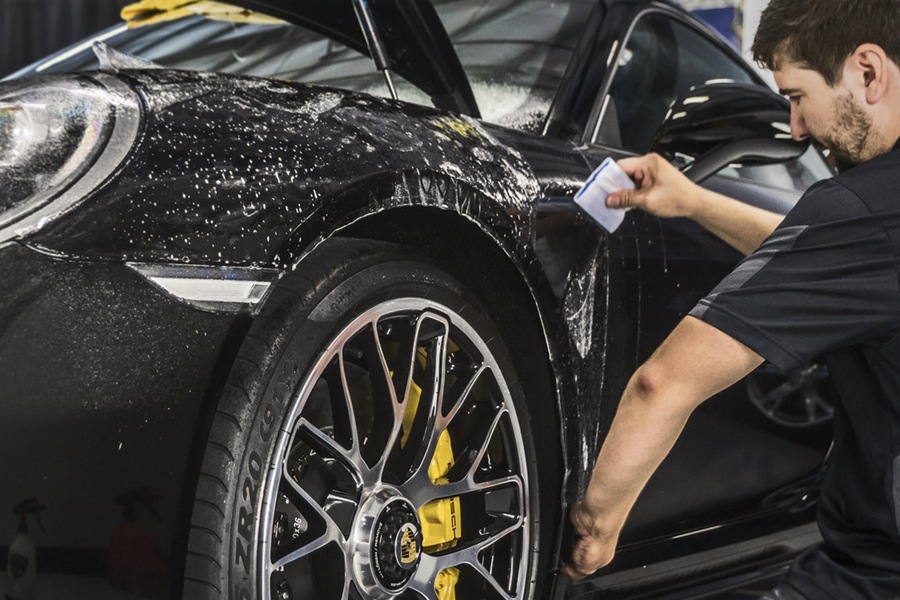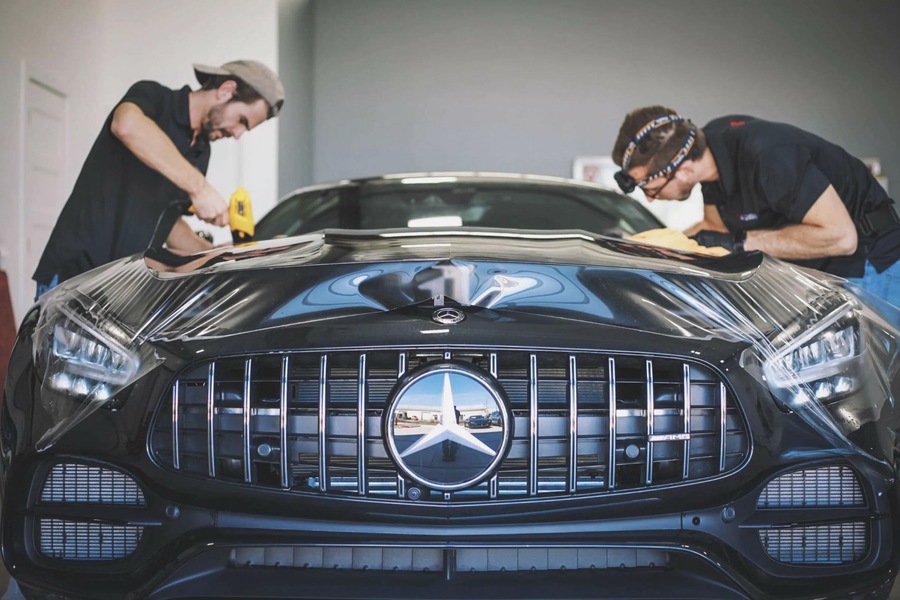
The adoption of electric vehicles (EVs) in Dubai has accelerated in recent years, driven by the city’s commitment to sustainable mobility and environmental conservation. As EVs become more prevalent on Dubai’s roads, protecting these high-value assets has become a priority for owners. One popular method for safeguarding a vehicle’s exterior is through Paint Protection Film (PPF). This article explores whether PPF is essential for electric vehicles in Dubai, examining the specific needs of EVs in the region’s unique environmental and urban context.
Understanding Dubai’s Environment: Challenges for Electric Vehicles
The climate of Dubai presents substantial obstacles to vehicle maintenance, as it is characterized by sandstorms, intense UV radiation, and high temperatures that are prevalent year-round. Paint degradation, including fading, discoloration, and chipping, may result from these factors. Maintaining the exterior condition of electric vehicles, which frequently represent substantial investments, is not solely about aesthetics; it also involves safeguarding sensitive components and preserving the vehicle’s value.
This is a concern for both traditional internal combustion engine vehicles and electric vehicles, as the harsh sun in Dubai can cause accelerated deterioration on the vehicle’s paint. The performance of the battery and other electronic components can be indirectly impacted by the high temperatures, which can also affect the efficacy of cooling systems if not managed properly. PPF provides an additional layer of protection against these environmental stressors, thereby ensuring that the vehicle’s appearance and functionality are preserved over time.

The Role of PPF in Protecting EVs from Physical Damage
Electric vehicles are often equipped with advanced materials and technologies that differentiate them from traditional vehicles, including unique paint finishes and delicate electronic components. PPF serves as a protective layer that absorbs impacts from small debris, pebbles, and other road hazards, which are commonplace on Dubai’s roads. This protective film is particularly beneficial for EVs, as it helps to prevent chips, scratches, and other minor damages that can detract from the vehicle’s overall appearance and market value.
PPF is designed to be nearly invisible and does not alter the vehicle’s original aesthetics. This is an important consideration for EV owners who often prefer a sleek, modern look for their vehicles. The film’s ability to self-heal from minor scratches further enhances its value, ensuring that the vehicle retains its showroom finish even in the face of everyday driving challenges.
Enhancing the Longevity and Resale Value of Electric Vehicles
One of the substantial benefits of PPF is its ability to preserve the resale value of a vehicle. The condition of a vehicle’s exterior is a critical factor in determining its market appeal and price in Dubai, where the market for prestige and high-performance vehicles is robust. The additional layer of protection that PPF offers is particularly advantageous for electric vehicles, which frequently embody a combination of environmental responsibility, technology, and luxury.
PPF guarantees that the vehicle will maintain its new-car appearance for an extended period by safeguarding the paint from fading, chips, and blemishes. This is particularly critical in a city such as Dubai, where the resale market is highly competitive, and purchasers are particularly attentive to the condition of high-end vehicles. The investment in PPF can be recouped through a higher resale value, making it a prudent choice for EV owners who are eager to maximize their return when upgrading or selling their vehicles.
Cost-Effectiveness of PPF for EV Owners
Although the initial cost of a PPF application may appear to be substantial, it is crucial to evaluate the long-term financial advantages. The expense of repainting or repairing vehicle paint can be substantial, particularly for electric vehicles that frequently feature specialized finishes. PPF offers a cost-effective alternative by minimizing the necessity for frequent touch-ups or repairs, thereby saving proprietors both time and money.
This protection is not a recurring expense due to the durability of PPF, which can last for up to 10 years with appropriate maintenance. The investment in PPF can result in substantial savings over the course of the vehicle’s lifecycle in Dubai, where high-end vehicles are confronted with a variety of environmental and urban challenges. For electric vehicles, which are already positioned as a long-term investment in sustainable mobility, PPF is in accordance with the owner’s overarching cost-saving objectives.
Navigating the Urban Landscape: PPF’s Role in City Driving
The urban environment of Dubai is distinguished by its high-density traffic, frequent construction, and constrained parking spaces, all of which exacerbate the likelihood of minor collisions and injuries. Electric vehicles, which are frequently operated by early adopters who prioritize aesthetics and technology, are not impervious to these hazards. Door dings, minor fender benders, and incidental contact with road debris are among the physical impacts of city transportation that PPF serves as a buffer against.
The application of PPF is particularly beneficial in safeguarding high-impact areas of the vehicle, including the front bumper, hood, and side reflectors, which are the most susceptible to damage. PPF contributes to the preservation of the pristine condition of electric vehicles in Dubai’s bustling urban landscape by mitigating the effects of these commonplace occurrences. This is particularly pertinent for electric vehicle owners who prioritize the durability of their vehicle’s exterior as part of their overall investment in the development of sustainable and advanced automotive technologies.

Environmental Considerations: Aligning PPF with Dubai’s Sustainability Goals
Dubai’s strategic vision includes a strong emphasis on sustainability, with initiatives such as the Dubai Green Mobility Strategy 2030 promoting the use of electric vehicles. PPF aligns with these goals by offering a protective solution that reduces the need for frequent repainting and chemical-based paint corrections, thereby lowering the overall environmental impact of vehicle maintenance.
PPF’s ability to protect and extend the life of a vehicle’s paintwork can be seen as a contribution to Dubai’s broader sustainability objectives. By maintaining the integrity of the vehicle’s exterior, PPF reduces waste and supports the efficient use of resources—principles that are central to the ethos of electric vehicle ownership.
Conclusion
The growing popularity of electric vehicles in Dubai reflects the city’s commitment to innovation and sustainability. As more residents adopt EVs, protecting these investments becomes increasingly important. PPF in Dubai offers a practical and effective solution for safeguarding electric vehicles from the region’s harsh environmental conditions and urban driving challenges. By enhancing the longevity, aesthetic appeal, and resale value of EVs, PPF proves to be a valuable addition for car enthusiasts committed to preserving the quality of their vehicles.

Cyclist, hustler, music blogger, Eames fan and critical graphic designer. Acting at the fulcrum of aesthetics and function to craft experiences both online and in real life. I prefer clear logic to decoration.
